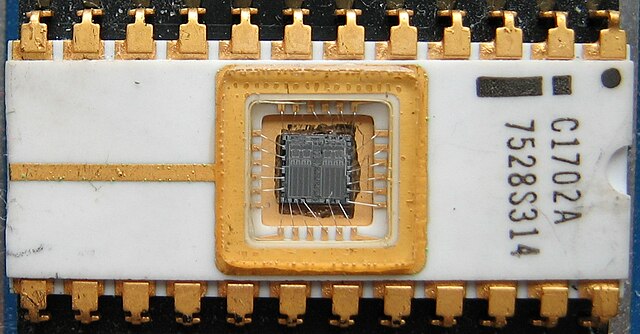A programmable read-only memory (PROM) is a form of digital memory where the contents can be changed once after manufacture of the device. The data is then permanent and cannot be changed. It is one type of read-only memory (ROM). PROMs are used in digital electronic devices to store permanent data, usually low level programs such as firmware or microcode. The key difference from a standard ROM is that the data is written into a ROM during manufacture, while with a PROM the data is programmed into them after manufacture. Thus, ROMs tend to be used only for large production runs with well-verified data. PROMs may be used where the volume required does not make a factory-programmed ROM economical, or during development of a system that may ultimately be converted to ROMs in a mass produced version.
Texas Instruments PROM type TBP18SA030N
Read-only memory (ROM) is a type of non-volatile memory used in computers and other electronic devices. Data stored in ROM cannot be electronically modified after the manufacture of the memory device. Read-only memory is useful for storing software that is rarely changed during the life of the system, also known as firmware. Software applications, such as video games, for programmable devices can be distributed as plug-in cartridges containing ROM.
Many game consoles use interchangeable ROM cartridges, allowing for one system to play multiple games. Shown here is the inside of a Pokémon Silver Game Boy cartridge. The ROM is the IC on the right labeled "MX23C1603-12A".
The first EPROM, an Intel 1702, with the die and wire bonds clearly visible through the erase window
Transformer matrix ROM (TROS), from the IBM System 360/20
An EPROM





